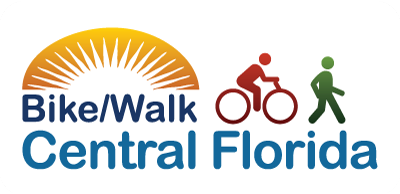By Dan Tracy, Orlando Sentinel
In a notion that has been talked about for years, downtown Orlando’s roads could be reworked to slow cars and trucks as a way to encourage more people to walk or ride their bikes.
Among the possibilities: returning two-way traffic to streets such as Orange Avenue, narrowing Robinson Street and transforming parking lots underneath Interstate 4 into green space.
“We need to go back to thinking about people,” said Shelley Lauten, who led a committee that came up with ways to make downtown a more friendly place for walkers and cyclists.
Their wide-ranging recommendations remain in draft form and likely will not come before the Orlando City Council until the spring. In the meantime, the report — part of a so-called “visioning” exercise commissioned by Mayor Buddy Dyer — will be refined.
Dyer said he has not seen the preliminary results and will not comment on the suggestions until he has read the finished product. But, he said, he is all for making downtown more accommodating to people on foot and pedaling.
“It’s something we’ve been talking about a long time,” Dyer said.
Lauten said her group, which issued an eight-page “findings of need” on downtown, walked and rode bikes about the central city and experienced just how intimidating the traffic can be.
“It’s amazing what you see when you do it,” she said.
One committee member who took to a bike was Eliza Harris, a planner who happens to work downtown and often rides to her job.
She pointed to Rosalind Avenue and Robinson Street on the west and north borders of downtown’s most iconic landmark, Lake Eola, as impediments to people trying to use the park. They are difficult to cross, she said, because they are three and four lanes wide, respectively.
Even when a car slows or stops to let someone pass, she said, another car can come up from behind and speed by.
“Double threat,” she said. “They [the motorist] don’t understand why the car is stopping.”
The Florida Department of Transportation owns Robinson Street and other major thoroughfares in downtown. It is about to launch a study on whether to narrow Robinson to three lanes along Lake Eola and nearby Howard Middle School by adding parking spots and possibly a middle turn lane or median.
The idea “is not out of line for where we are headed as an agency,” said Billy Hattaway, who is in charge of FDOT efforts to make roads safer for pedestrians and cyclists.
The problem with downtown right now, experts and committee members say, is that it is designed to speed cars and trucks in and out of the area and pegged largely to workers coming and going during the morning and evening rush hours.
That discourages people from enjoying the amenities of downtown, which has a growing residential population because of a spate of new condominium and apartment construction.
Retail and restaurants, in particular, suffer when traffic moves swiftly, Lauten said.
“If you are rushing downtown, you just don’t want to stop and shop,” she said.
Debra Ray, executive director of the Church Street District downtown, said the organization likes the concepts from Lauten’s group.
Ray said she is particularly supportive of having a park that could be used to connect Church Street to the Amway Center a couple of blocks away, but on the west side of I-4.
“Having a bright and vibrant walkway would draw more people and make it more pedestrian friendly that would unite both sides of our district,” she said in an email.
Going to two-way traffic on Orange, downtown’s main drag, and possibly other streets, she wrote, “would make the drive more user friendly and give people the opportunity to see what we have to offer downtown.”
The one-way configurations that have been in place since the 1960s, Harris said, do not work well because they tend to confuse people not accustomed to downtown.
Even worse, she said, the system gets “everybody shuttled very quickly to where the bottleneck is.”
No cost estimates have been made for the proposal, though experts say it might not be expensive because it mostly would entail relining the streets, adding new signs and changing the signal system. Construction could be held to a minimum.
[email protected] or 407-420-5444
Copyright © 2014, Orlando Sentinel


